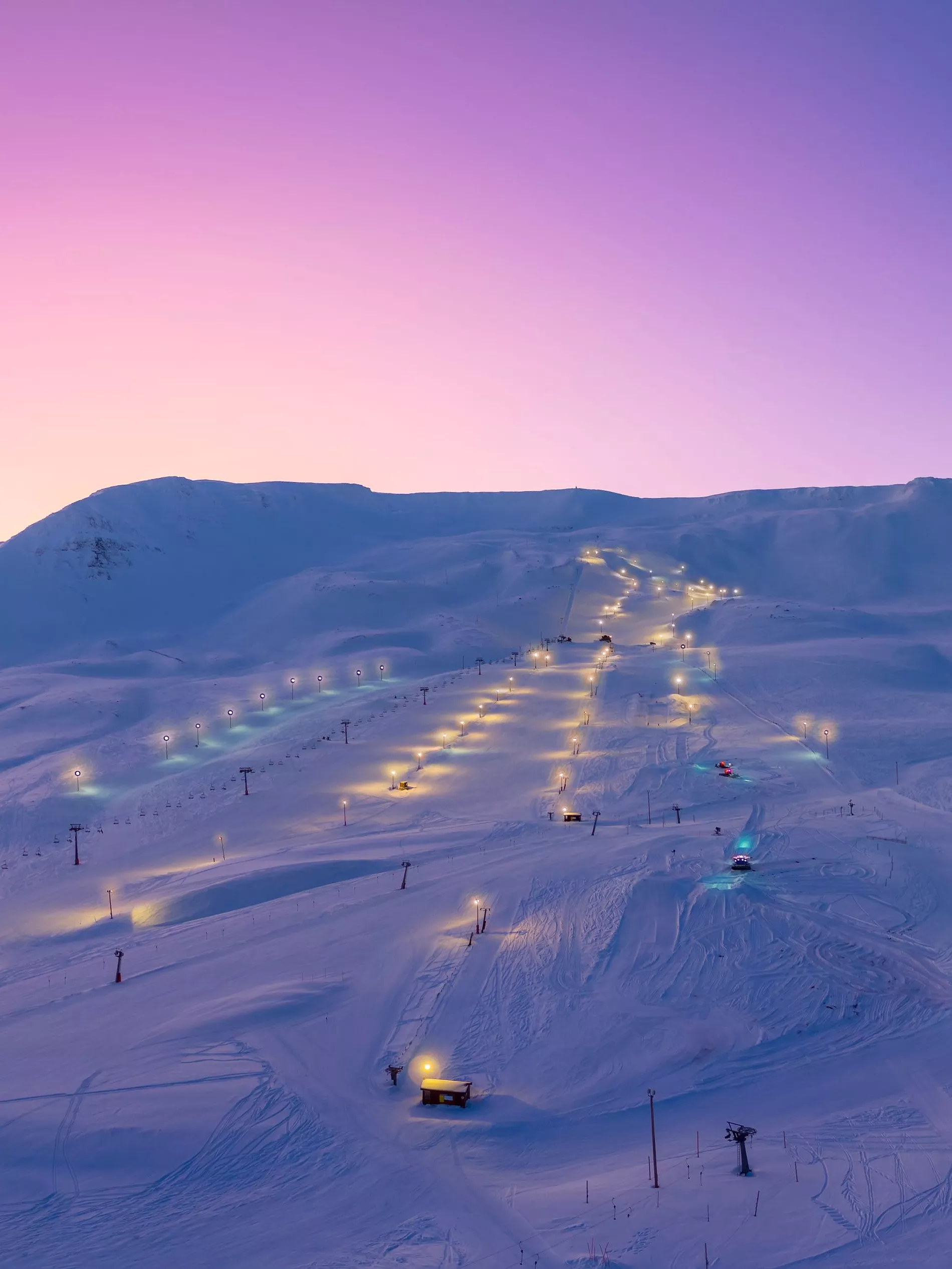Iceland might not offer your typical skiing experience, but it boasts ski adventures unlike anywhere else. From breathtaking off-piste spots and serene, crowd-free ski resorts to must-try heli-skiing adventures, skiing in Iceland is sure to surpass all your winter travel dreams. Ahead, we break down why Iceland truly offers a one-of-a-kind ski experience and all the tips you'll need for your trip
When booking your ski holiday, Iceland might not be the first destination that springs to mind. And it’s true – you won’t find Alpine-style ski packages, large resorts, or crowded après-ski parties here. Instead, the country offers a veritable playground for intrepid explorers and travellers seeking for more tranquil settings. With everything from heli-skiing expeditions to unique ski-and-sail trips, where you can glide from the highest mountaintops all the way to the sea – there’s something for everyone, whether you’re an adrenaline junkie or prefer a leisurely cruise down the slopes. And all of this is, of course, backdropped by some of the most stunning sceneries in the world.
Ahead, Vogue Scandinavia rounds up all the essential facts and tips about skiing in Iceland, including the best ski centres and adventures to book.
Related: The 10 best places to travel in 2025
The perks of limited snowfall
Despite its name, Iceland doesn’t always live up to expectations when it comes to snow. In fact, some parts of the country lack stable snowfall for a reliable ski season. While this might sound like a drawback at first, it does come with surprising advantages. For downhill skiing, shorter slopes and fewer ski lifts mean a more laid-back, uncrowded experience, perfect for those favouring tranquility over the hustle and bustle of larger ski resorts. Additionally, while Iceland has a reputation for being expensive, skiing in the country is often surprisingly affordable, with a range of reasonably priced day passes available for most destinations.
Ski touring, on the other hand, has been gaining popularity in Iceland recently, and it's worth to note that the price tags for those can be a little bit heftier. The country offers a range of options for cross-country skiing and backcountry skiing, peppered with breathtaking views of surrounding mountains and fjords, which will compensate for the lack of infrastructure. And trust us, the pristine, untouched landscapes and serene environment makes these trips well worth the investment.
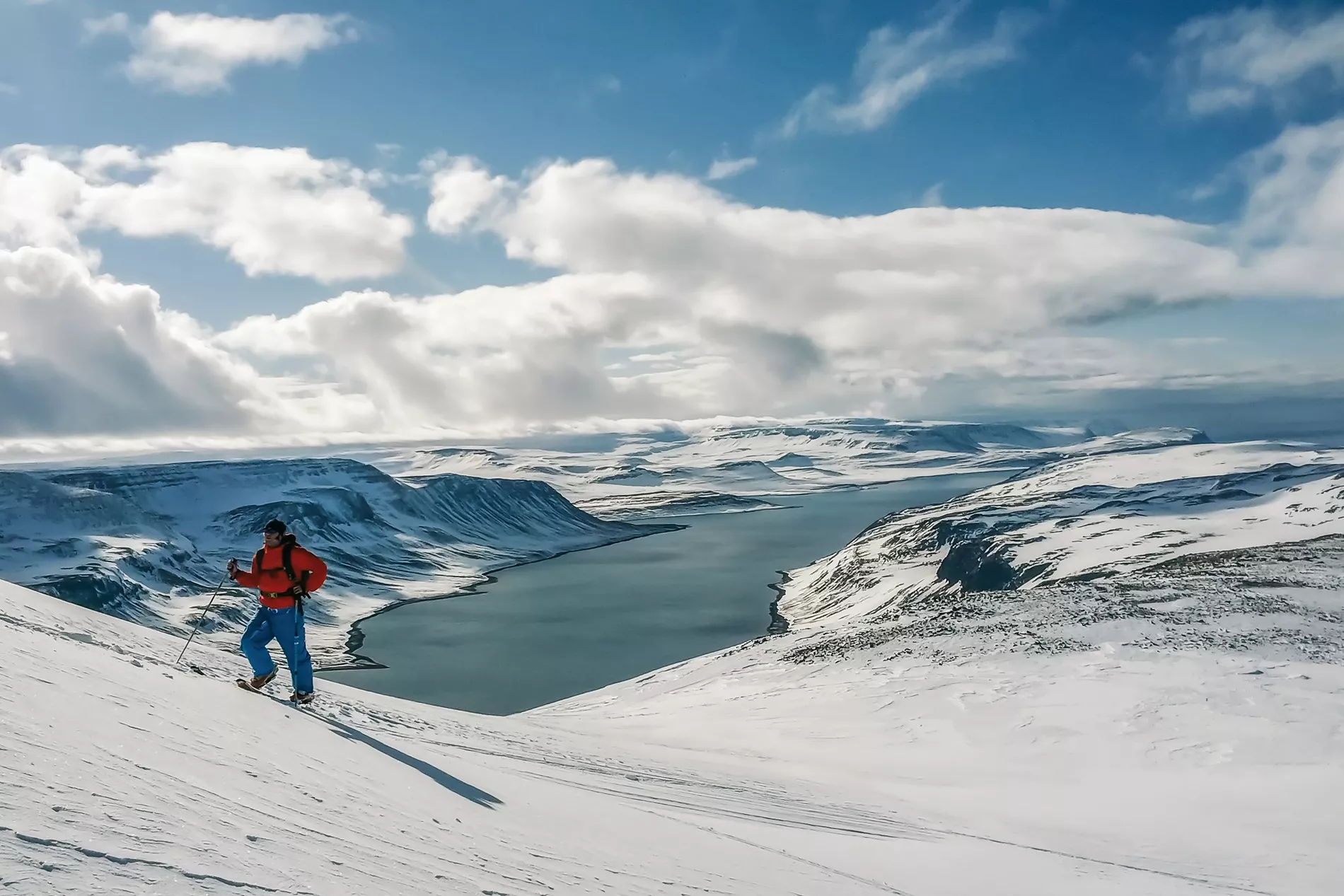
Photo: Getty
Skiing in Iceland is nothing like the Alps – in a good way
Sure, the Alps might be among the most iconic ski hotspots in the world, but Iceland offers a completely different – and uniquely positive – experience. There are no gondolas or cable cars, no sprawling log cabins, no (official) après-ski, and no mountain restaurants in Iceland. What you will find, however, is quaint accommodation that’s never overcrowded and free from raucous, day-to-night parties. Plus, there is also no risk of going head-first into a tree, as there are no trees either. Instead, you’ll be able to relish unobstructed views stretching far into the horizon, and if you’re lucky, you might swish down a mountain under the dancing lights of the auroras before relaxing in a natural hot spring at the end of the day. As Iceland’s winters have short daylight hours, ski pistes are always lit up and skiing is available into late evenings.
It’s also worth to bear in mind that Iceland’s downhill ski season is shorter compared to international counterparts. The first ski days typically begin in December and last until late April, but the most reliable conditions are found in February and March. For cross-country skiing, the first pistes appear as early as November and can remain open through April, offering a variety of shorter and longer trails. Meanwhile, the backcountry ski season usually starts in December, peaks from February onward, and often extends into June. Locations in the Westfjords, northern, and eastern regions of Iceland tend to have more consistent snowfall than the south. However, these areas also experience darker days at the height of winter and are more prone to storms.

Skiing in Iceland might lack some of the features found in the Alps, but it more than makes up for it with its tranquil and pristine surroundings. Photo: Getty
Quaint and uncrowded ski resorts
Small towns across Iceland might have a local ski area, likely with one or two-button lifts and huts where you can make use of a sandwich grill or microwave to warm up your packed lunch, but there are only a handful of ski centres in Iceland, where you can usually find a small number of lifts, a cafe, equipment rental and smaller, charming accommodation options. Out of these, Bláfjöll and Hlíðarfjall are the larger ones as they cater to two of the biggest urban areas in Iceland and are the only ones that feature chair lifts. Bláfjöll is just a 30-minute drive from Reykjavík and Hlíðarfjall is located by the town of Akureyri in the north of Iceland.
In case you're on the hunt for the most Alpine-like experience, consider visiting Oddsskarð ski resort, often referred to as 'Iceland’s Eastern Fjord Alps,' nestled between the villages of Eskifjörður and Norðfjörður. The resort offers nine kilometres of slopes to explore, catering to all skill levels, with the longest run stretching nearly a kilometre. Oddsskarð also boasts cross-country trails and cosy cabins where you can rest after a long day on the slopes.
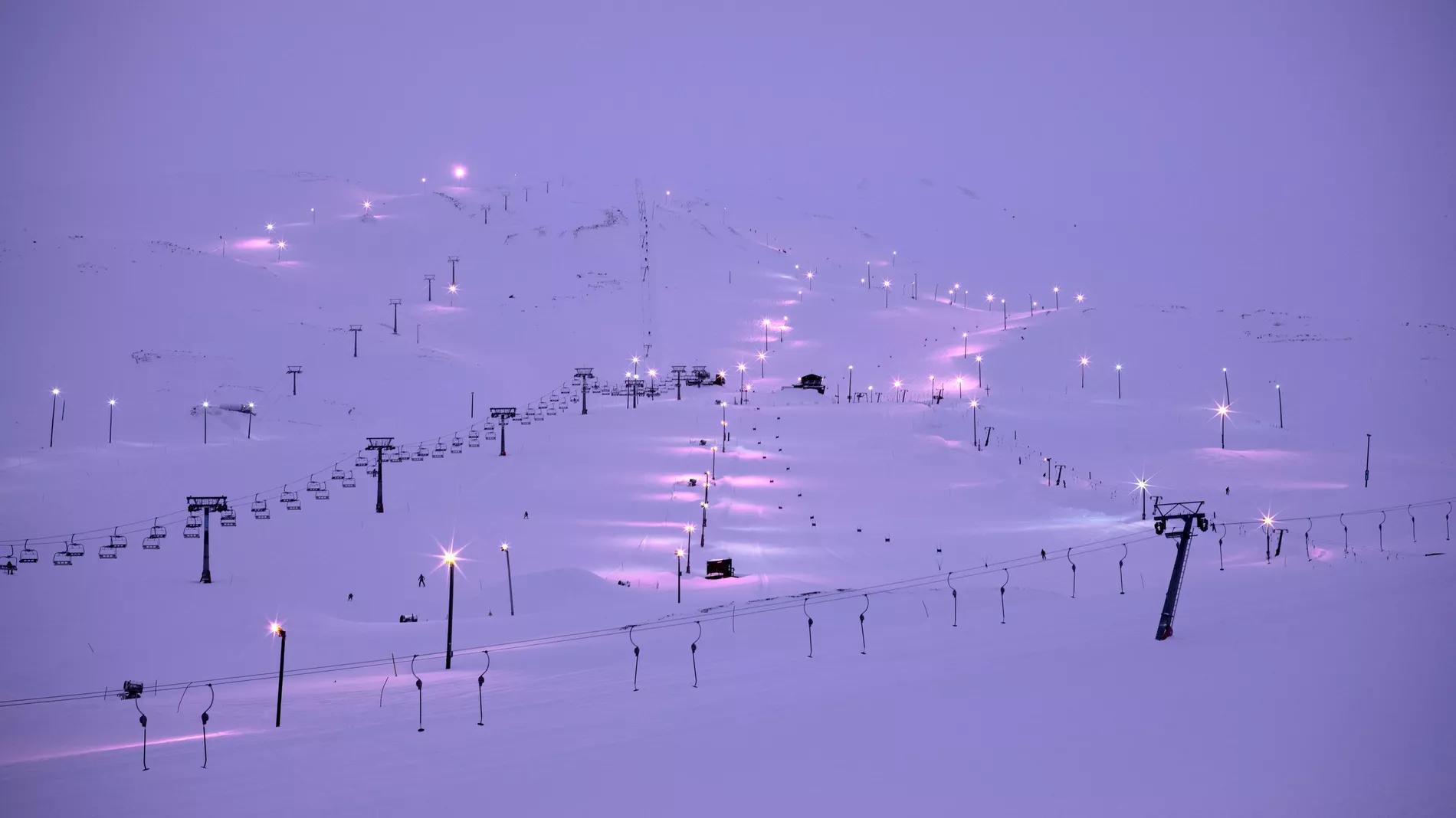
Hlíðarfjall Akureyri ski area, North Iceland. Photo: Getty
Meanwhile, in the Westfjords you’ll find Dalirnir, two joined valleys just off the sleepy town of Ísafjörður. Despite only having three-button lifts the area features decent cross-country pistes and hosts the most popular skiing event in Iceland, Skíðavikan or The Ski Week. The main characteristic of the Westfjords are, of course, its many magnificent fjords and towering mountains, which will provide a unique backdrop for your skiing adventure. This is the most rural area of Iceland, and can be cut off from the rest of the country due to heavy snowfall in winter. If you don’t mind putting on your skins and earning your turns by walking uphill before you get to slalom down again, then this region is your best bet for some fresh powder.
Related: Sustainable Icelandic sea salt is now a Michelin chef favourite – discover its remote origins
Helicopters and boats to elevate your skiing experience
From Ísafjörður, it’s possible to book a multi-day sailing and skiing package, exploring new slopes each day on mountains that may never have been skied down before. The expedition takes visitors to far-flung fjords as the boat anchors in a different harbour each day, and gives the option to kayak between the majestic mountains in between runs. Talk about a nature-immersive, adventure-filled experience.
Another fantastic area for backcountry skiing is the easily accessible Tröllaskagi Peninsula in northern Iceland. Spanning an impressive 4,000 square kilometres, it boasts peaks rising over 1,000 metres above sea level, with the tallest, Mt. Kerling, reaching 1,538 metres. The peninsula offers some of the best infrastructure for backcountry ski packages and is home to several charming towns, including Siglufjörður, Dalvík, and Ólafsfjörður, each featuring its own ski area.
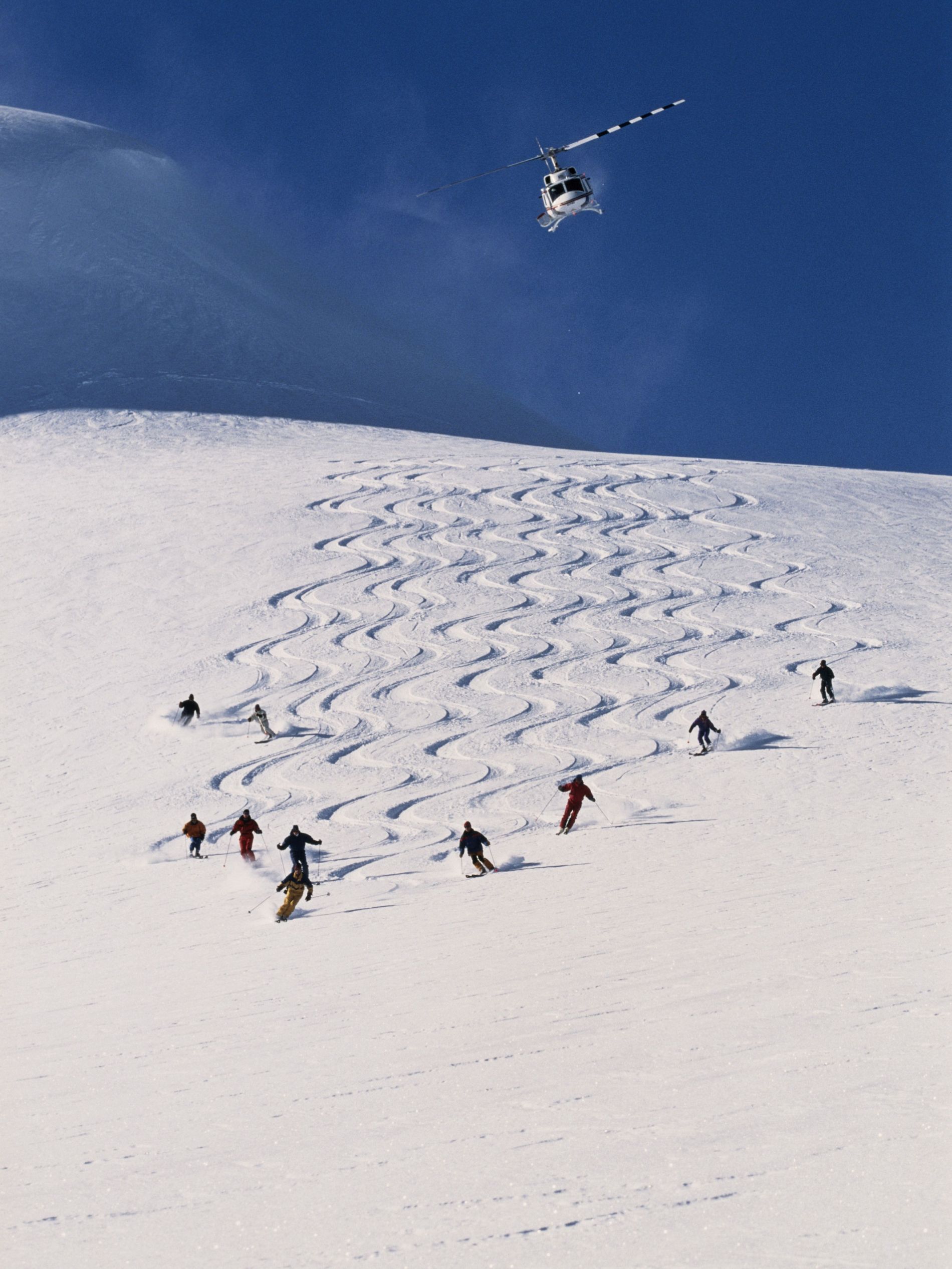
Photo: Getty
The Tröllaskagi Peninsula is also renowned for heli-skiing, which is a must-try for all the adventure-heads looking to elevate (quite literally) their skiing experience. In heli-skiing, skilled pilots transfer guests from the base of the slopes to the peaks, ensuring a safe and smooth ride up. Along the way, you'll also have the opportunity to marvel at Iceland's unparalleled scenery from the ultimate vantage point - up in the air. Viking Heli Skiing and Arctic Heli Skiing both operate on the peninsula, offering luxurious heli-ski packages. If you want to leave the helicopter out of the equation, you can also jump on a snowmobile and opt for cat skiing packages offered by Sport Tours.
Breathtaking off-piste options
The east of Iceland holds some of the country’s least explored ski areas but has recently gained recognition among both locals and travelers. Initiatives such as the Austurland Freeride Festival, held each March, have helped spread the word about this region’s spectacular peaks. Despite its growing popularity, the area still offers plenty of lesser-known spots with excellent off-piste slopes.
Some of the best off-piste ski areas in Iceland are located in Oddsskarð, Tröllaskagi Peninsula, the Westfjords, Snæfellsnes Peninsula, Eyjafjörður, Vatnajökull Glacier (for true adventurers), and Bláfjöll. Due to the country’s temperamental weather, hiring a guide or joining a tour is highly recommended when venturing off-piste. For the best conditions, plan your off-piste skiing trip between February and late April, when the weather is most reliable.
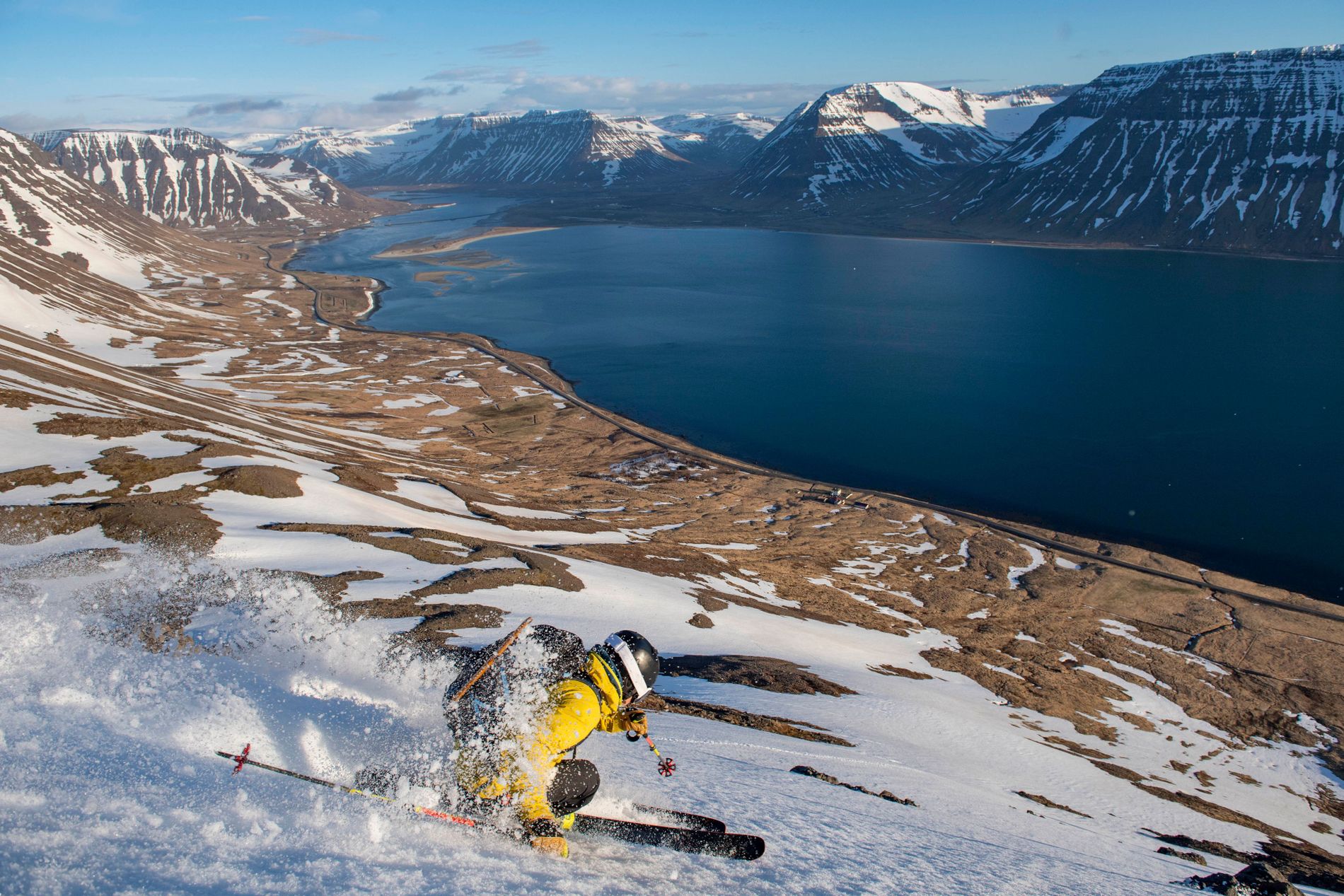
You can backcountry ski to the ocean. Photo: Getty
Alternatively, another off-the-beaten-piste option is the colourful hot spring region of Kerlingarfjöll. In the 1990s this area had enough snow in early summer to be able to offer reliable skiing and the slopes were accessible by a couple of button lifts. Since then, the snow level has risen far higher and skiing is now only accessible by hiking up the mountains first. Visitors will need to book a private tour, as there are no scheduled ski tours available. Here, the slopes are accessible in the month of June in mild weather so camping is an option for staying overnight and the views are incomparable, with steam rising from hot springs in the surrounding multicoloured mountains.
